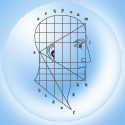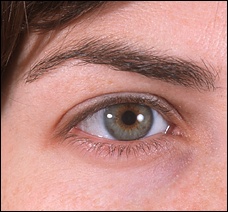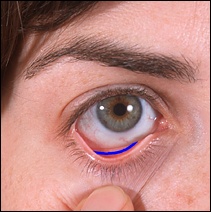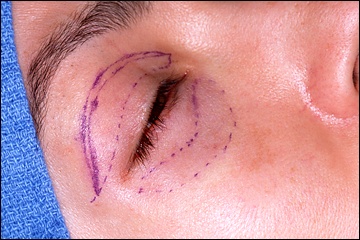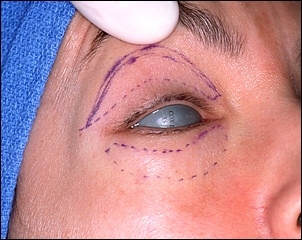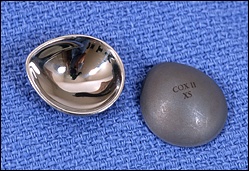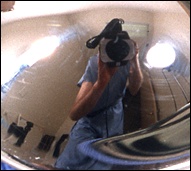 Above left we see the metal eye shields. The eye shield on the left is
turned so that we can see the surface that sits against the eye. That
shiny surface is highly polished so that it can sit directly on the eyeball and
not scratch or irritate it. If you look very closely into the shiny
surface, you can see me, upside-down, taking the photograph. The image
above right is me again, extracted from the image above left.
Above left we see the metal eye shields. The eye shield on the left is
turned so that we can see the surface that sits against the eye. That
shiny surface is highly polished so that it can sit directly on the eyeball and
not scratch or irritate it. If you look very closely into the shiny
surface, you can see me, upside-down, taking the photograph. The image
above right is me again, extracted from the image above left.
The patient is
sedated, but even if she were wide awake, she wouldn't be able to feel the
shield in her eye. I put anesthetic drops in the eye to
numb the cornea, and then I inject the upper and lower
eyelids with lidocaine to make sure the eyelids are completely numb for the
operation.
The smooth mirrored inner
surface of the eye shield is reminiscent of the outer surface of a Slaver stasis
box. Write me if you know what that is.
|
